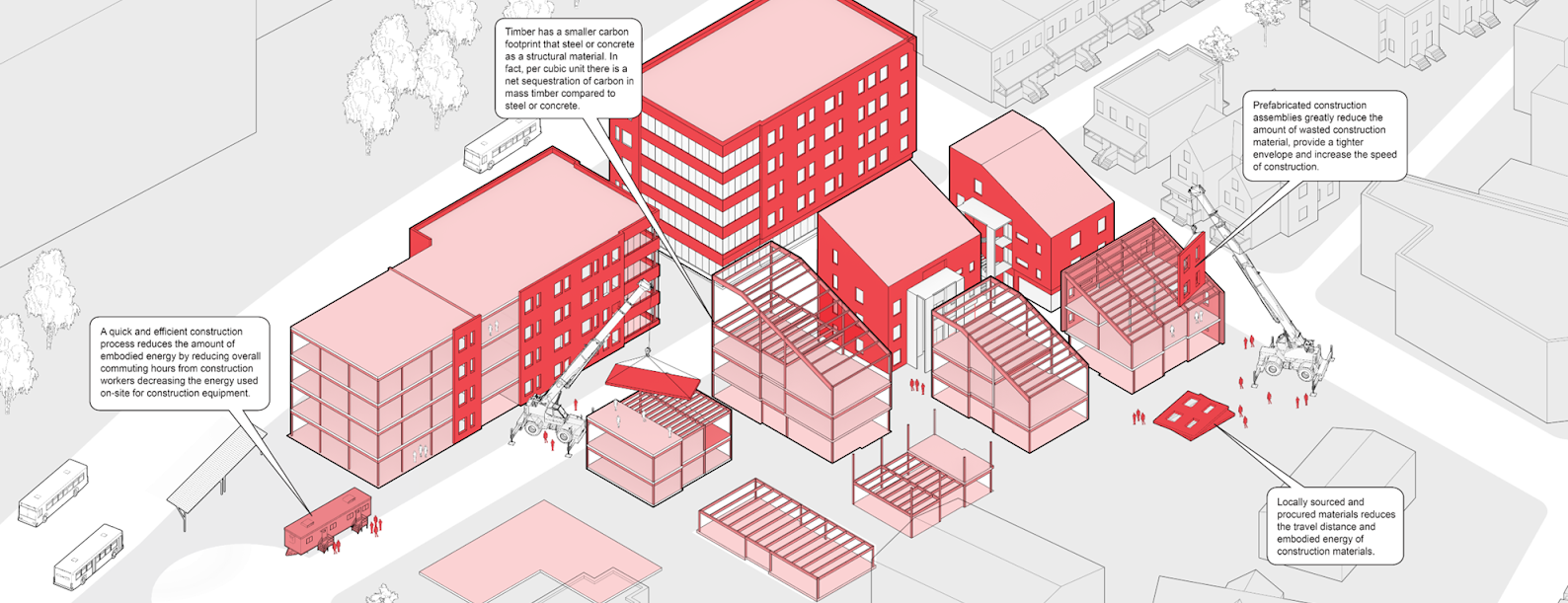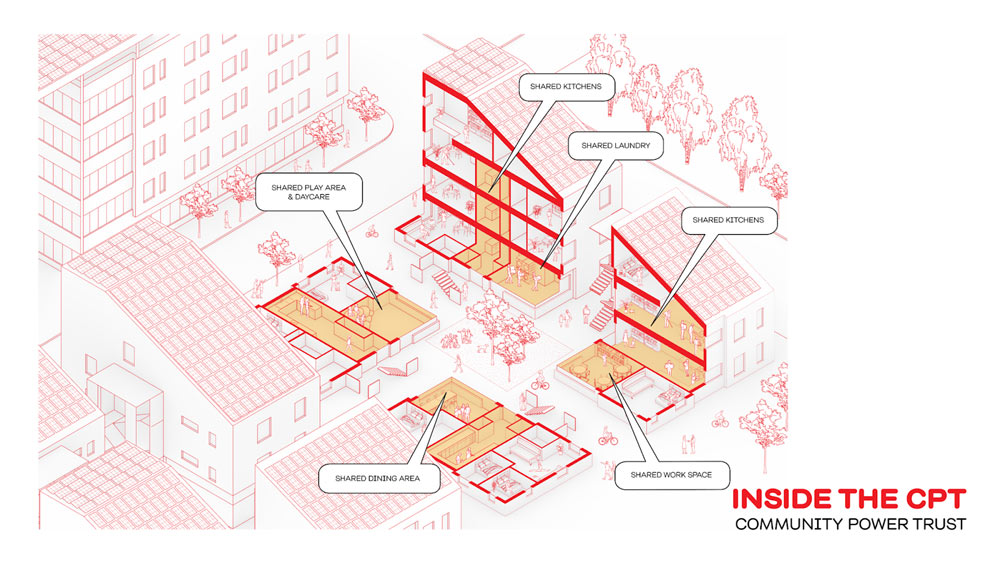The Shape of Power
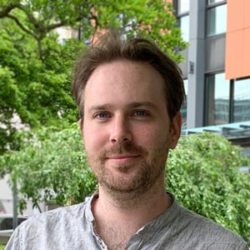
Schyler McAuliffe
Over the past two years I’ve had the opportunity to contribute to community-scale sustainable design projects through my internship at evolveEA, which relates to the research and design work I have been doing at the Carnegie Mellon University School of Architecture. My thesis, The Shape of Power, is about understanding our current energy paradigm in Pennsylvania, and more broadly in the world right now, which is a fossil fuel paradigm. I intentionally chose those specific words because it could be referring to energy power, it could be political power, it could be community power. It’s all of the above.
My thesis has many goals. One of them is to understand the origins of the fossil fuel paradigm.
It comes from colonization, it comes from slavery, it comes from a lot of different sources that over generations and decades have morphed and entangled in one another. Which makes it really challenging to unpack because we as humans love to have one answer for stuff, and like most really big, complex systems, there is no one answer. I believe that the better we understand the past, the better we can understand how to move forward in a more informed way and not repeat the mistakes of the past.
Another argument that I’m making with my thesis is that not only are we embedded in a fossil fuel energy regime, we are also transitioning quite quickly to a renewable energy regime.
The behavior of renewable energy is quite different, it is inherently very decentralized. Yet when people talk about offshore wind farms, that is very much like centralizing—you’re trying to concentrate this power generation. We’re trying to shove it into this box of wanting it to behave the exact same way, and we want our societies not to change at all. Currently between the two regimes, even though the behavior is vastly different, the complex system of energy production, delivery, consumption, all of that stuff—looks the same because it’s all rooted in capitalism.
The last thing I’m examining in my thesis is how we can inform new ways of living based on understanding a new energy regime.
The Community Power Trust (CPT) is a novel organization structure that I came up with that could be adopted in neighborhoods across the country. It doesn’t exist right now, but it is the theoretical conglomeration of a couple different things. It’s similar to a Community Land Trust if you’re familiar with that model, but with a community trust that’s regulating power production.
The CPT has three prongs to its approach. One is Housing Development, which is most similar to a Community Land Trust. Another is Renewable Development, which is power development that is shared within that community. And then the third is living within Ecological Boundaries, which is something that is never taken into account in capitalism. That last one is a big pivot point, because Community Land Trusts do exist, and occasionally some sort of community power production can exist under capitalism, but ecological systems have historically not been accounted for.
Urban Design Acupuncture
Conceptually, in sustainability I think there are two main ways in which you can address impact at the city level. There’s probably more, but for the sake of argument, there are two main ways.
One of them is to start clean where you build new development on previously undeveloped land. You see that happening in places like Dubai, for example, where they take this huge area that didn’t have anything on it before and build up a sustainable city.
And there’s another option, which is sort of like urban design acupuncture, where there’s little tiny pockets of change that could then influence more change. And just like acupuncture in the bodies, they’re not completely opening up and destroying the body, but all of these little parts are being touched and tweaked and that changes the overall energy flow in the body.
It’s a similar concept with urban design acupuncture. You’re not trying to level and rebuild all of a city in a more sustainable manner. You could instead see the existing goodness in this neighborhood and leverage that in order to make something else instead of saying, “I don’t see anything good here. Let’s just remove and rebuild.”
The goal of the Community Power Trust is to leverage the existing people-power, such as the political power of that community, to elevate it and make something more sustainable and longer lasting. On Storytelling and People Power
A lot of the things I came to realize in my thesis is that you could do urban designs all day long, but you need political power, you need communities to work with each other, to work with you, to work in groups. That is where a lot of magic happens. No matter how good a design, it will stay on the books forever unless people steward it into existence.
You need to tell a really good story that people can get behind, and people can envision their future in that story. I think that’s really tricky because you need a story that’s articulated well enough to establish a shared future, but not so articulate that it represents only a small percentage of people. It needs to be clear enough so that everyone can say “I see a future in this,” and also abstract enough for them to say “I see my future in this,” which is a tricky balance.
Using Maps to Tell Stories
Maps to some extent can reveal power structures. One of the things I was showing via the maps at my thesis exhibition is exploring the current condition of capitalism in everything. A natural course of capitalism is that everything starts to aggregate towards the top. It’s consolidated no matter what “It” is, whether capital, power, or whatever. It’s going to be consolidated towards the top in a very selective few.
For example, there are all kinds of fracking wells across Southwestern Pennsylvania and they are very dispersed. They’re incredibly decentralized; there is no specific area where all the fracking wells are. And although you can see the physical infrastructure of fracking wells, the ownership is part of corporate and political power which is something that you can’t see.
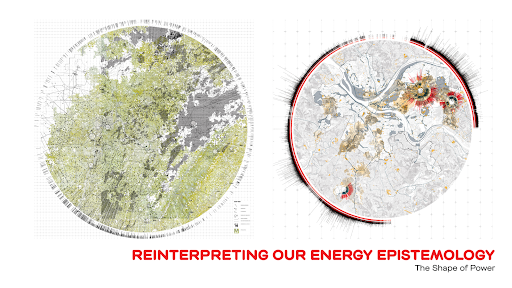
In some previous maps I made, I connected a line from each fracking well in SWPA to the corporation that owned the well. There were maybe 105 corporations listed, but only a handful of them had most of the lines going to them. So you could see these four companies own almost all of the wells in the area. That’s where the power is concentrated, in a monopoly. That was one way in which I was trying to understand corporate power dynamics. It was sort of a cheeky thing I did in The Shape of Power but it helped demonstrate my point.
From History to Justice
In my main thesis studio is where I did all of my research. Within that class, I was lucky enough to be able to bring in some other courses that helped influence that research. One course that I took that had a profound impact on my thesis was Decoloniality. Originally when I was looking at my thesis, I was not delving into the history, especially the contested political history in terms of slavery and other things, and how that has influenced our energy system now. After taking that course, however, I was halfway through my thesis and I had the revelation that that is far more important to me than what I was doing before. My thesis was still all about energy and community, but I completely reoriented the values that structure it.
Not only is there extraction happening with fossil fuel, but then there is also so much pollution. Pollution is almost impossible to map because there’s water pollution, air pollution, and other kinds of waste pollution, none of which respects any kind of political borders. Starting to look at these maps through an environmental justice lens was interesting. It didn’t really change what I was mapping, but it changed the narrative driving my presentation.
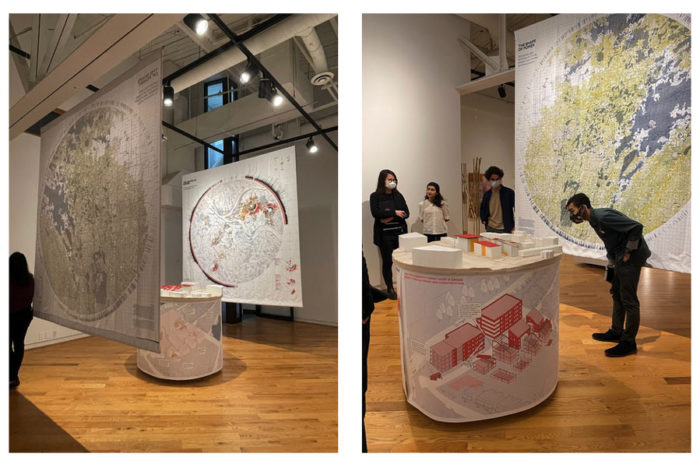
As I reflect on my trajectory for the past five years, I’m always trying to see what’s new. My values are like my North Star, but, how do I get there and what do I do to get there? I think that will always be changing. From a zoomed out perspective, we’re telling a story through all of these data visualizations, and that’s mainly what we do in urban design. We have lots of interesting design work, complex data, relationships between people and communities and whatnot. And we’re trying to tell a story about that. It is a lot of the same skills that I’m using for both evolve’s work and my masters thesis. It looks different in the day-to-day, but in the end, we’re just trying to tell a story.
_
SCHUYLER MCAULIFFE is an advocate for sustainable urban environments molded by the people that inhabit them. Schuyler earned a dual Masters of Architecture and Urban Design degree at Carnegie Mellon University winning a number of awards, including the Akram Midani Fellowship and two scholarships. He also studied Environmental Design at Montana State University where he graduated with honors, and participated in a summer design studio in Rome, Italy


